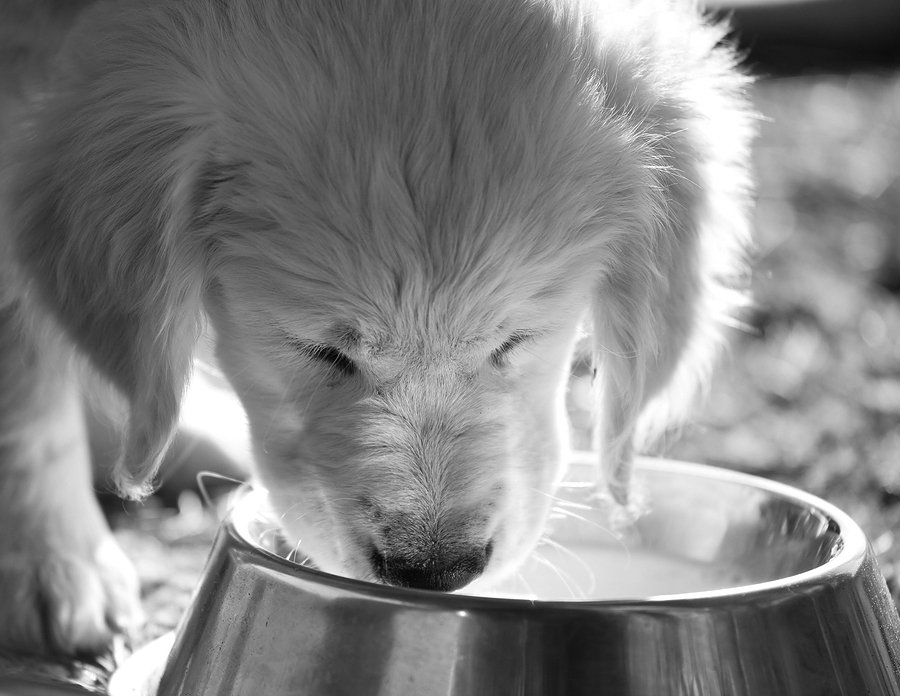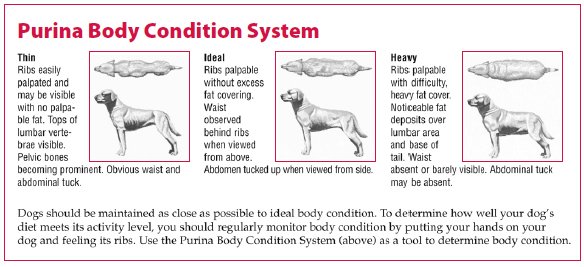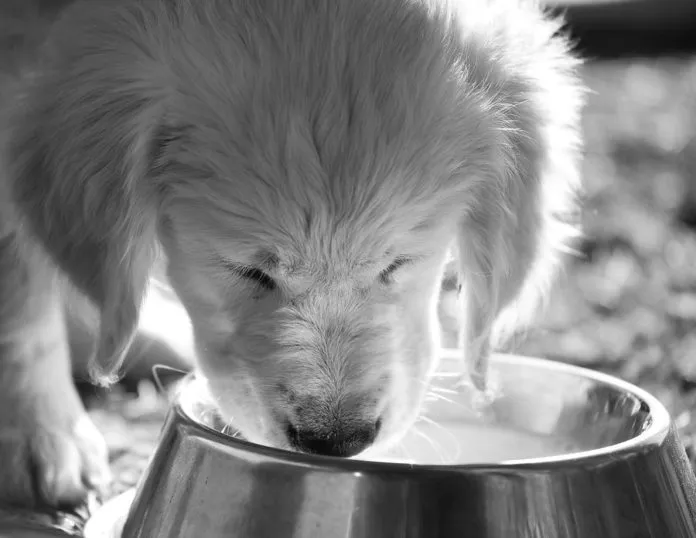[Updated February 9, 2018]
From Tufts April 2012 Issue
Because puppies go through a remarkable growth spurt that can last as long as two years, their nutrition can make a life-long difference in their health. Consider this: A growing pup needs about twice as many calories per pound of body weight as an adult dog, according to the National Research Council of the National Academies. During this time, they’re building strong bones and muscles, and need extra energy and nutrients.
The challenge for owners is navigating the maze of choices. Should they feed a food for small or large breeds? Or one intended for all sizes, ages and breeds? “All the different options can make it very confusing,” says nutritionist Sally Perea, DVM, MS. “And then there are different brands and different philosophies.”
Dr. Perea, a member of Your Dog’s advisory board, shares this advice on choosing food wisely.

BIGSTOCK
Buy Food Intended for Puppies
Don’t buy a food for all life stages. Most puppy foods tend to be higher in the protein and fat needed to support muscle growth. They’re also higher in particular minerals and vitamins needed during growth, Dr. Perea says.
Check the Ingredient List
The Association of American Feed Control Officials (AAFCO) recommends that dry food for puppies contain a minimum of 22 percent protein, compared to 18 percent protein for adult dogs. The recommended level of fat also is higher – 8 percent for puppies, 5 percent for adults.
Now compare the calcium. Dry food for puppies should contain 1 percent calcium, as opposed to the 0.6 percent required in adult dog food — almost twice the amount. These requirements are easiest to achieve with a commercial puppy food.
Feeding Large Breed Puppies
Probably the greatest source of confusion about diets that Dr. Perea encounters is the mistaken belief that a large-breed pup — one expected to reach at least 60 pounds as an adult — can be fed adult dog food.
Owners should provide just the right amount of calcium for optimal growth. Excess or inadequate amounts — and either may be present in adult dog food — can cause abnormal bone growth. AAFCO requires a minimum of 0.6 percent calcium in adult food, as previously noted, but its maximum level is 2.5 percent – far too high for large-breed puppies.
Choose a puppy food specifically designed for large-breed puppies, such as Labrador retrievers and Great Danes. Manufacturers of large-breed formulas try to keep calcium levels around 1 percent, though the amount can vary with the company. Dr. Perea says most try not to exceed 1.3 or 1.4 percent calcium.
Find Puppy Food with DHA
Make sure the ingredients include DHA (docosahexaenoic acid). The long-chain omega-3 fatty acid is probably one of the most critical ingredients Dr. Perea looks for in a diet for puppies. “It’s important for brain and retinal development.”
DHA is best found in marine sources such as fish or fish oil. The pet food can or bag may brag that the food includes DHA. It’s a fairly popular supplement for pregnant women, baby formulas and baby foods.
A study by the College of Veterinary Medicine at Texas A&M University, published in 2006 in the Journal of the American Veterinary Medical Association, found DHA may improve memory or learning in young dogs. Puppies were also found to have improved neurological development if their mothers ate DHA-enriched foods during pregnancy and the pups’ weaning.

Additional studies looking at trainability found that pups who ate foods higher in DHA performed better when going through a maze.
Small Breed Puppy Food Requirements
Give finicky toy pups a food especially designed for them. Small-breed puppies (expected to remain below 20 pounds as adults) have high energy requirements because of their high metabolic rates. It’s like feeding a mouse versus feeding an elephant. The amount of calories a mouse needs per unit of body weight is much greater than an elephant’s, Dr. Perea says. The mouse needs to consume about one-fourth of its body weight in food daily, whereas a large animal like an elephant needs proportionately less. Foods designed for small breeds tend to be more energy-dense.
Switching to Adult Dog Food Diets
When the puppy reaches his mature body size — for most breeds around his first birthday— it’s time to go on adult food. Larger breeds take longer to reach full body size, so switch at about 18 months. For giant breeds, such as Great Danes, consider keeping them on puppy food for two years. But these are only rules of thumb. Your veterinarian will know what’s best for your dog, particularly if a medical problem arises and dictates a special food.
Home-Cooked and Raw Dog Food Diet Risks
Home-cooked and raw-food diets can put pups at risk for nutritional deficiencies. An 8-month-old Shetland sheepdog fed a raw meat-based, home-prepared diet developed several health problems, including rickets, neck pain, sudden collapse and an inability to rise, the Journal of the American Veterinary Medical Association reported in 2009.
Seven months later — after hospitalization, treatment of medical complications and switching to a new diet — the dog was deemed clinically normal. “I definitely worry about people who want to try to do alternative diets for growing animals – home-cooked diets or raw-food diets,” says Dr. Perea. “Usually the main problems we see are with bone development because a lot of home-cooked diets or raw-food diets aren’t very high in calcium.” Some owners feed chicken necks as a calcium source, but it’s not known how well dogs can absorb this form of calcium. “I don’t think we know enough about how bioavailable that is,” says Dr. Perea.
Best bet: Feed your pup a complete and balanced commercial food. If he has a special need such as a food allergy, work with your veterinarian or a veterinary nutritionist to make sure he’s getting all the needed nutrients while he’s growing.
Keep Your Dog Lean
While your pet is reaching his full size, pay attention to his body condition to ensure you can feel his ribs during petting. If he’s edging into overweight and you’re free-feeding, provide measured meals at certain times.
Once a dog becomes overweight or obese, it’s hard to lose the weight. A healthy weight is easy to maintain and will help stave off future orthopedic and other health problems such as diabetes.
Remember: No more than 10 percent of a pup’s daily calories should come from treats and table scraps, and their calcium and energy content should be similar to that found in commercial food. Treats given in large amounts may almost double a puppy’s calcium intake.
In the end, your ravenous puppy needs a lot of food…but not so much as to endanger his well being. His diet should be carefully chosen and balanced so he can grow into a strong-boned, healthy dog. These first months are critical for a lifetime of robust health. You have the power to get him off to a great start.
Sally Deneen is a writer in Seattle, Washington.






My dog need to be trained house training